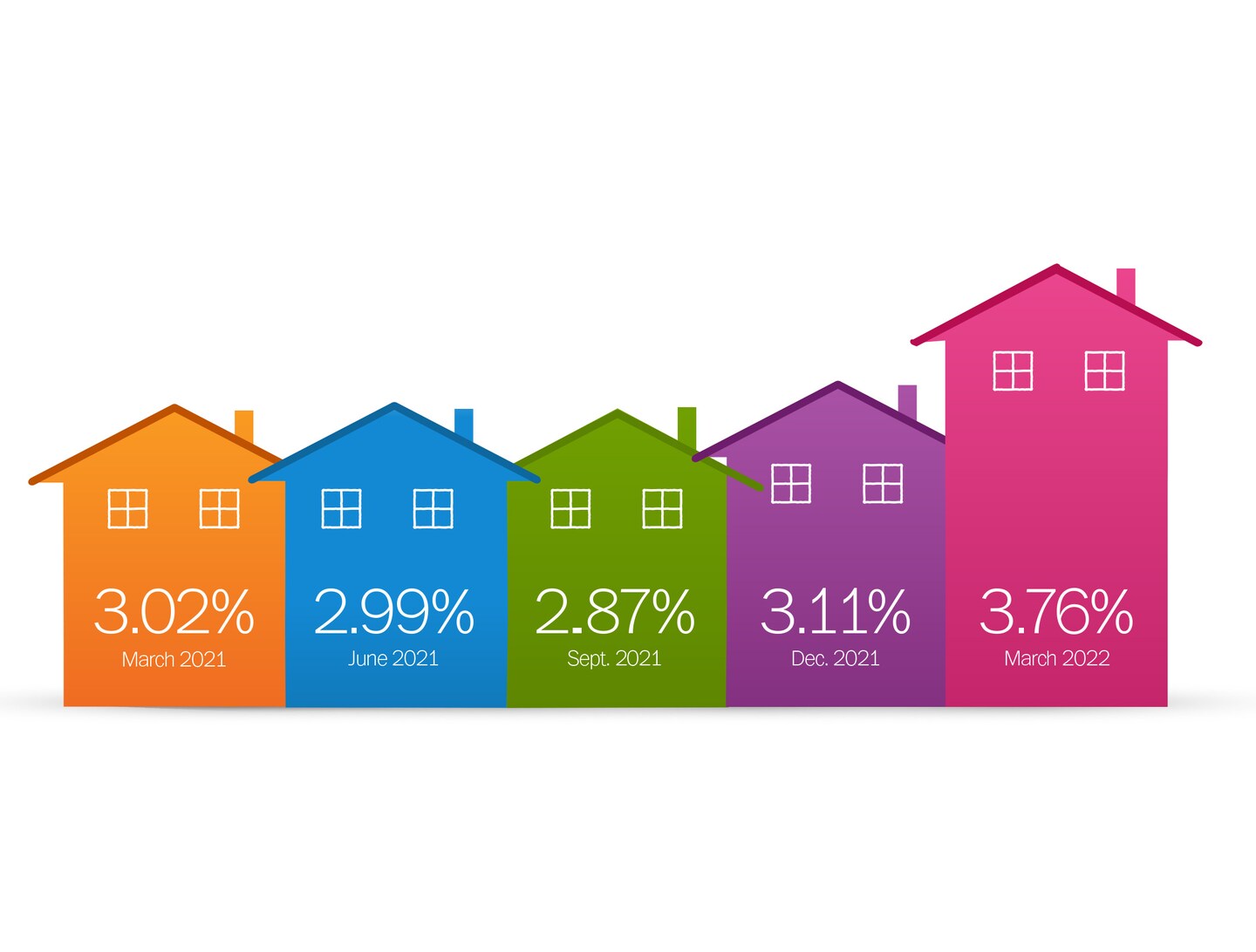Mortgage rates are pulled down by global events

Freddie Mac, the federally chartered mortgage investor, aggregates rates from about 80 lenders across the country to come up with weekly national averages. The survey is based on home purchase mortgages. Rates for refinances may be different. It uses rates for high-quality borrowers with strong credit scores who make large down payments. Because of the criteria, these rates are not available to every borrower.
The 15-year fixed-rate average dropped to 3.01 percent with an average 0.8 point. It was 3.14 percent a week ago and 2.34 percent a year ago. The five-year adjustable rate average slid to 2.91 percent with an average 0.3 point. It was 2.98 percent a week ago and 2.73 percent a year ago.
“Mortgage rates fell this week as investors sought safety by buying mortgage bonds,” said Holden Lewis, a home and mortgage specialist at NerdWallet. “This decline in rates is temporary because the Federal Reserve will start its rate-raising campaign in earnest in the middle of the month.”
Since the beginning of the year, mortgage rates had been trending higher. They had climbed 70 basis points before global events intervened. (A basis point is 0.01 of a percentage point.)
“Mortgage rates have generally risen over the past few months, but have been volatile for some time, and the conflict in Ukraine has exacerbated the volatility further,” Robert Heck, the vice president for mortgage at Morty, an online mortgage marketplace, wrote in an email.
Russia’s attack on Ukraine roiled global markets. With investors’ flight to safe assets such as government bonds, the yield on the 10-year Treasury — which had been hovering around 2 percent for the past month — sank to 1.72 percent on Tuesday before rising to 1.86 percent on Wednesday. As demand for bonds increases, their prices rise and their yields fall. Mortgage rates tend to follow the same path as long-term bonds.
“After weeks of Treasury yields and mortgage rates increasing in response to inflation fears and more aggressive Federal Reserve (Fed) expectations/rate hike guidance, we saw a pause in the upward climb upon the news of the crisis in Ukraine,” Heck wrote.
Investors are not only watching what happens in Ukraine but also are paying attention to what the Federal Reserve does to curb inflation. Although the central bank’s rate-setting committee doesn’t meet until later this month, Federal Reserve Chair Jerome H. Powell gave a preview of what is to come when he testified Wednesday before the House Financial Services Committee. Powell said he favored a quarter-percentage point increase in the benchmark rate. The Fed has not raised the federal funds rate since 2018. The central bank does not set mortgage rates, but its actions often influence them.
“While the market might be volatile, it’s forward-looking, which means it often has a better pulse on where things are headed than any single perspective,” Heck wrote. “The results of Fed meetings are usually priced into rates weeks before a meeting, meaning that rates are already reflective of expected shifts in the coming weeks.”
Bankrate.com, which puts out a weekly mortgage rate trend index, found the experts it surveyed mixed on where rates are headed in the coming week. Although more than half the experts said rates would go down, 29 percent said they would go up, and 14 percent said they would remain about the same.
Ken H. Johnson, a real estate economist at Florida Atlantic University, expects rates to fall.
“International uncertainty brought about by the conflict in Ukraine is outweighing a hawkish Fed’s fight against inflation,” he said. “The current flight to safety from equity to fixed-income markets is driving up the demand for 10-year Treasury notes and pushing yields down. In turn, this will put downward pressure on mortgage rates. Put bluntly, Russia’s invasion of Ukraine is driving down mortgage rates.”
But Michael Becker, a branch manager at Sierra Pacific Mortgage, predicts rates will rise.
“The Russian invasion of Ukraine last Thursday had investors buying bonds in droves as the flight-to-safety trade returned,” he said. “This drove yields on Treasurys and mortgage-backed securities lower and helped improve mortgage rates for a few days. But sanctions against Russia are pushing crude oil to new highs and reigniting concerns about inflation and what the Fed will do to curb it. These concerns will push mortgage rates higher in the coming week.
Meanwhile, mortgage applications were flat last week. The market composite index — a measure of total loan application volume — decreased 0.7 percent from a week earlier, according to Mortgage Bankers Association data.
The refinance index ticked up 1 percent but was down 56 percent from a year ago. The purchase index fell 2 percent. The average purchase loan size hit a new high. It was $454,400 last week. The refinance share of mortgage activity accounted for 49.9 percent of applications, the first time since June 2019 it has been below 50 percent.
“Mortgage applications slightly decreased last week, as higher rates continue to dampen demand for refinances,” said Bob Broeksmit, the president and chief executive of MBA. “Purchase applications declined for the fourth straight week, and the average loan size reached a new record, which is an indication that more of the activity is occurring at the upper end of the market where supply is less constrained.”






